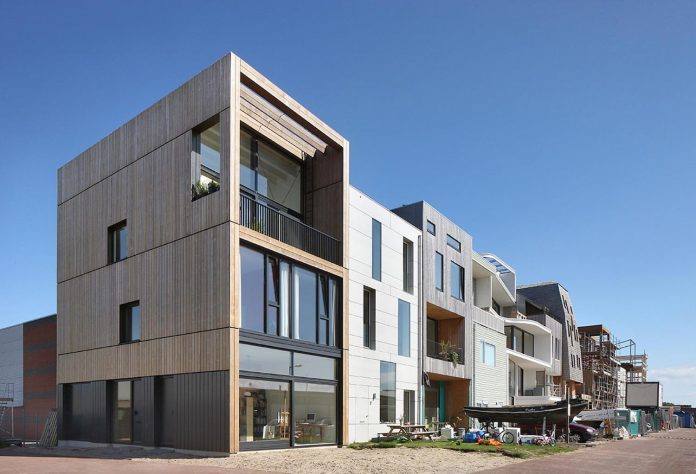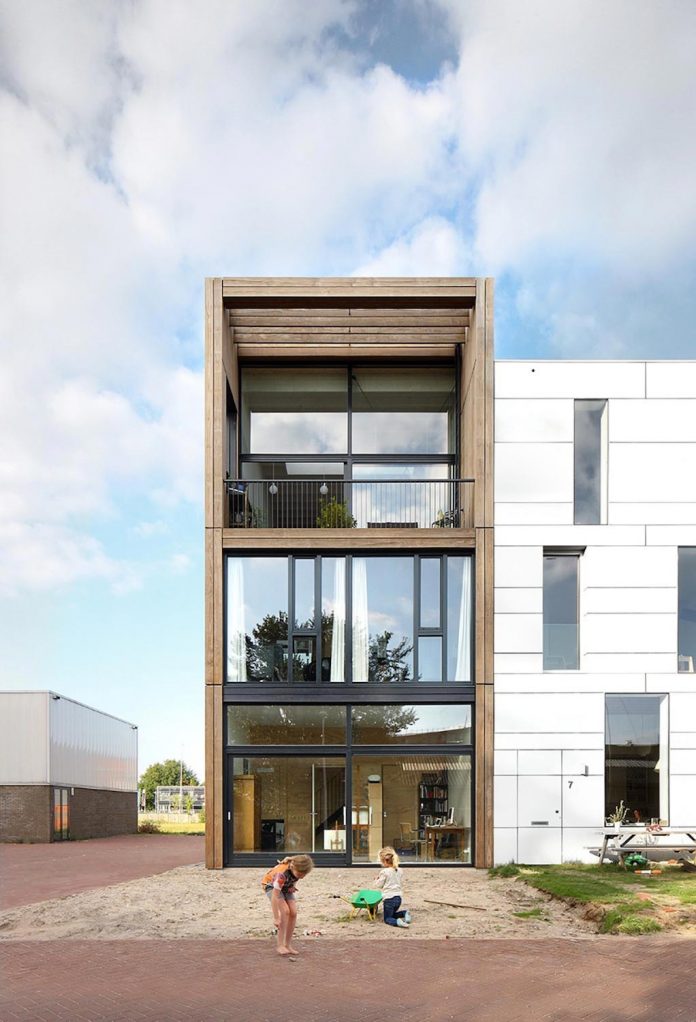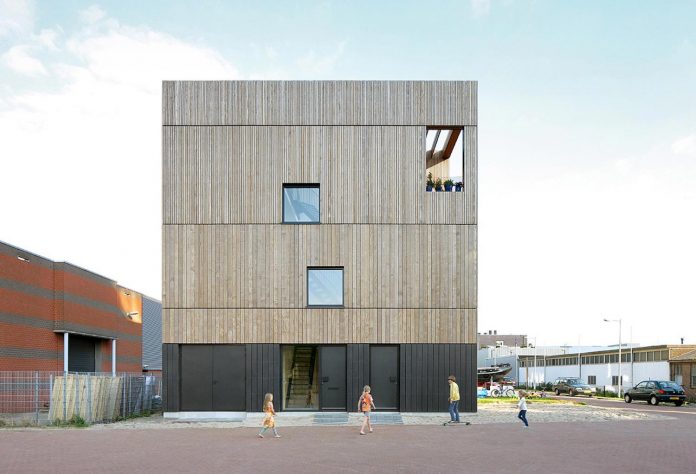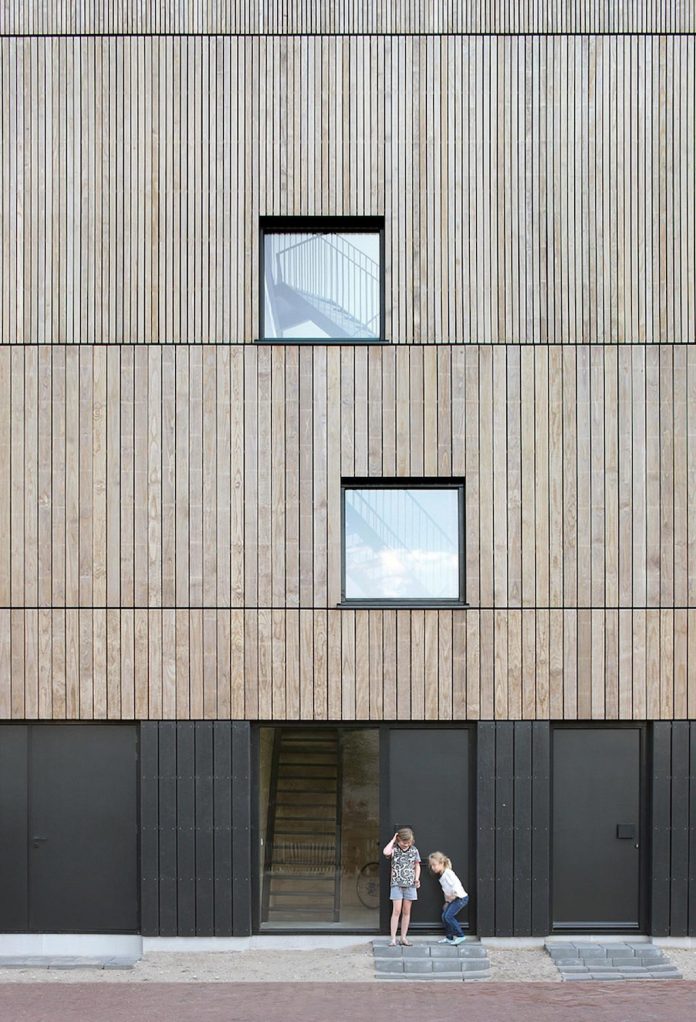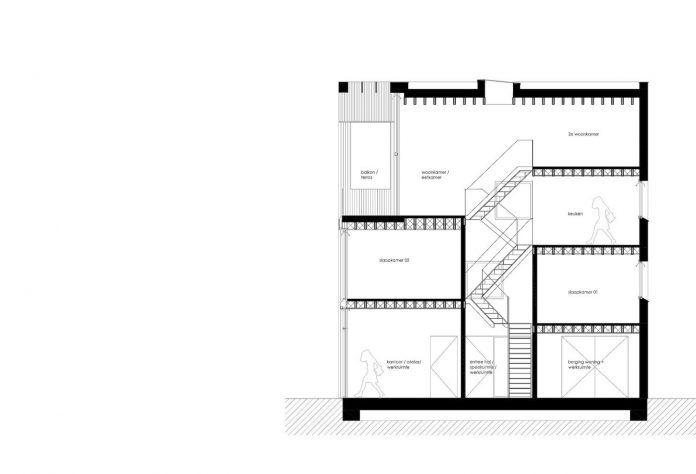Lofthouse 1: a corner house where all floors are interconnected in a continuous flow
Architects: Marc Koehler Architects
Location: Amsterdam, The Netherlands
Year: 2015
Area: 721 ft²/ 67 m²
Photo courtesy: Filip Dujardin
Description:
“In this corner house, all floors are interconnected in a continuous flow. The house takes maximum advantage of the exceptional views of its rugged, industrial environment. Loft House 1 is the first implementation of a series of durable, wooden loft houses.
The house is based on a reversed principle: its owners decided to sleep downstairs and live upstairs. This allows them to fully enjoy the views of the harbour from the kitchen, the lounge and the dining room. The owners’ wish was to connect the areas on the upper floors with the lower floors in one, continuous flow. A solution was found by incorporating a staircase that serves as an atrium and has become a central design element. The atrium has been designed so that each vertical walk becomes an attractive adventure. Another classification principle is the split-level structure: each floor is half a floor higher or lower in relation to the previous or the next. This allows the owners to look easily from one floor to the other. This creates a gradual transition from one floor to the next, unlike the clean break between each floor in a standard terraced house.
Thanks to the combination of the atrium — the staircase — and the split-level structure, the different levels of the house are truly interconnected in a single, continuous flow. This also goes for the workspace on the ground floor, which is located adjacent to the garden and the two bedrooms. The bedrooms are designed like small houses within a house, and are experienced as such. They were also given windows on the staircase side, resulting in some surprising sightlines. It was decided to position the openings in the façade in a playful manner, offering different views of the remarkable surroundings from different areas in the house.
This industrial location inspired the architect to design a sturdy framework with large glazed surfaces and black opaque, painted hardwood frames. Besides being sturdy, the house also emanates a serene atmosphere. The house has a refined wooden wall cladding, the transition from coarse to fine resulting in a façade with a layered and surprising appearance. The façade is covered with a preserved Radiata Pine softwood — NobelWood from Foreco. This type of wall cladding requires no treatment and is completely maintenance-free. NobelWood, a wood type resulting from responsible forestry, is a sustainable alternative to tropical hardwood. It has durability class 1, which is similar to teakwood, ages beautifully and colours with the seasons. This makes it not only a sustainable choice but also an aesthetic one.
What is so special about this house is its prefab wooden construction. The design was based on the Superlofts concept by Marc Koehler Architects, situated on the Houthaven quay in Amsterdam. In Loft House 1, the building system was optimized and further expanded, resulting in an evolutionary prototype. The wooden structure serves as a framework in which floors can be installed in any position, giving the entire house a flexible layout. In addition, the prefab wooden structure shortens the construction period considerably, to just six months. The construction of the prefab elements in a closed workshop took two only weeks, and assembly at the building site took no more than four days.”
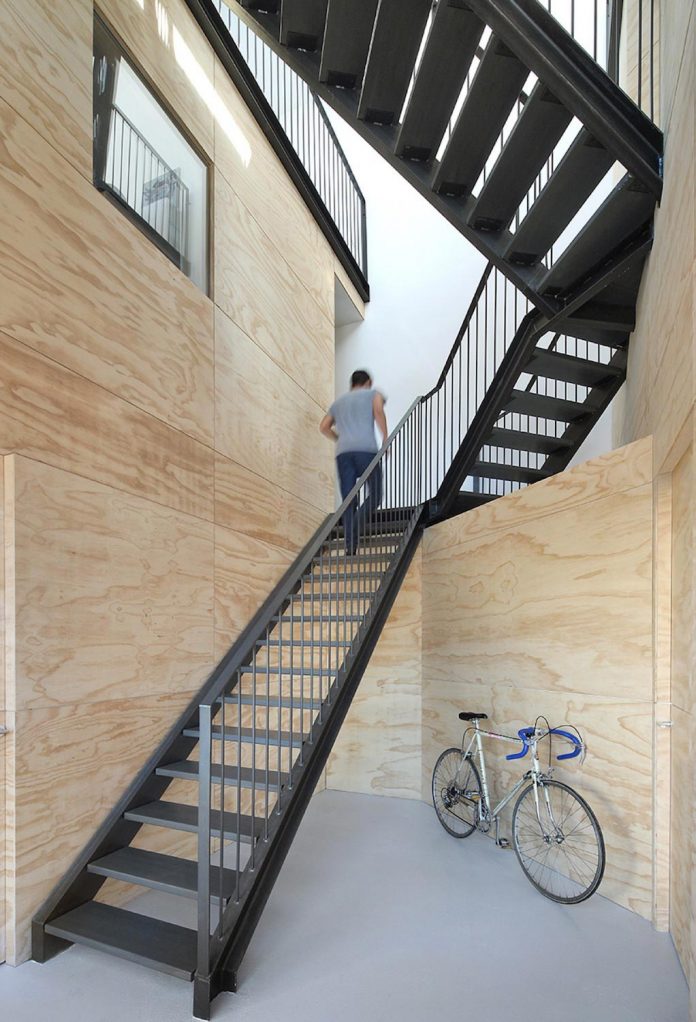
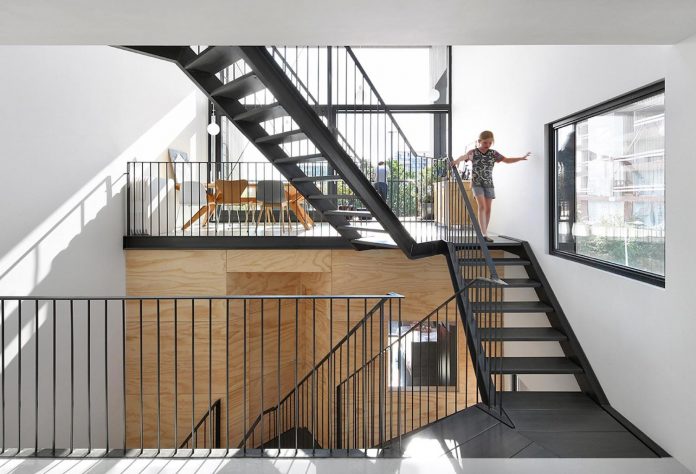
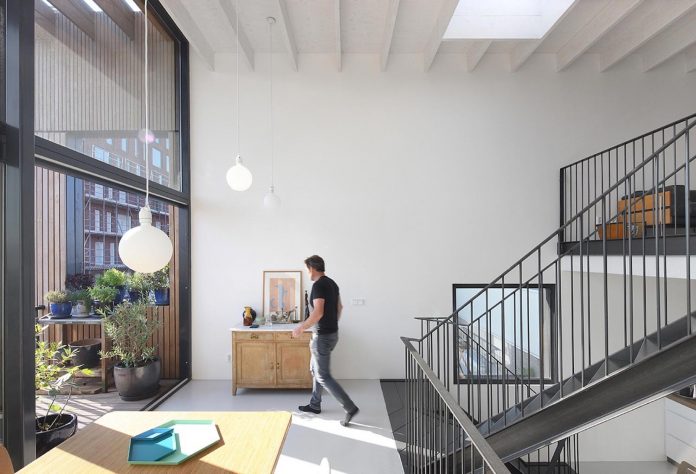
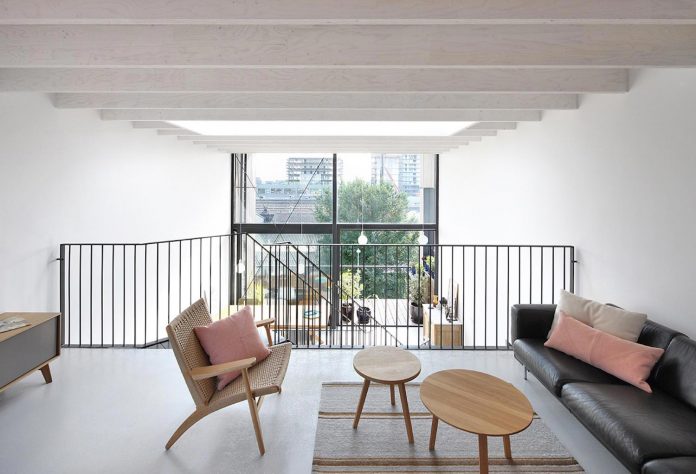
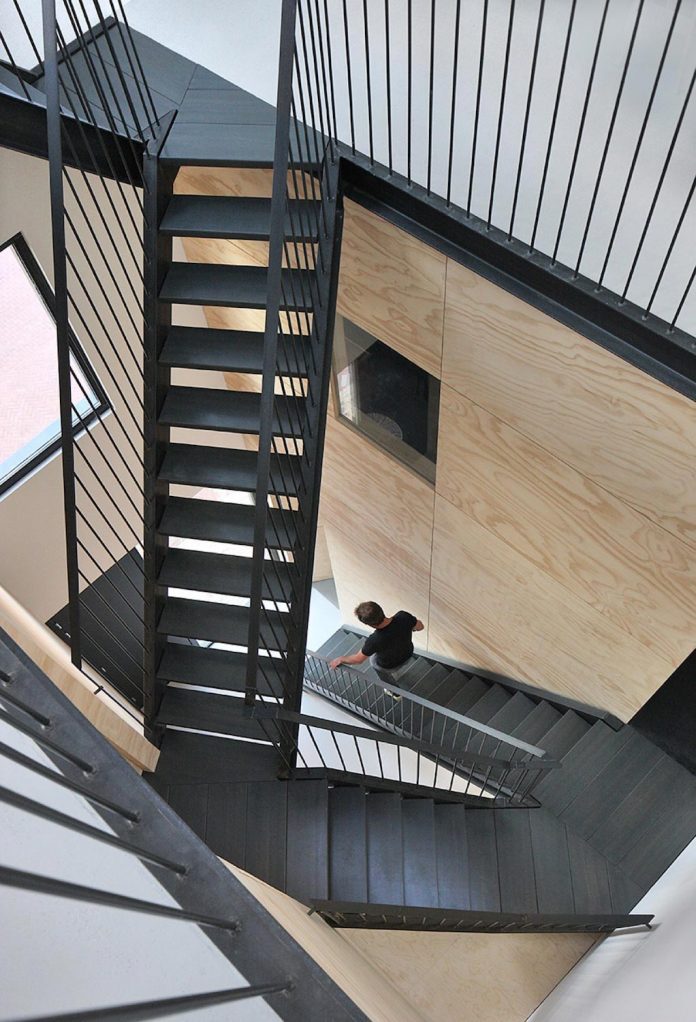
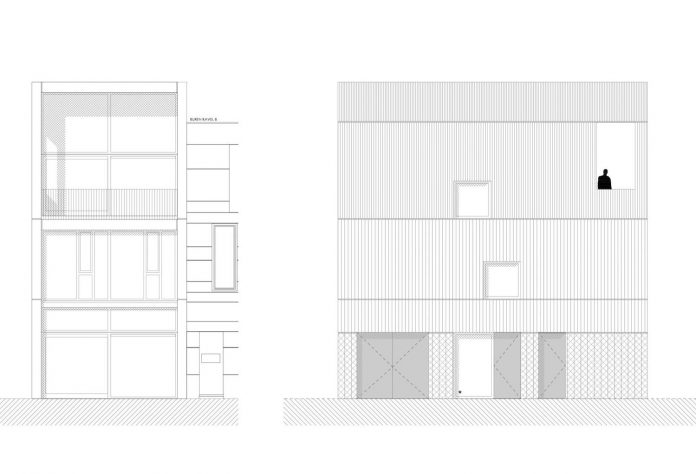
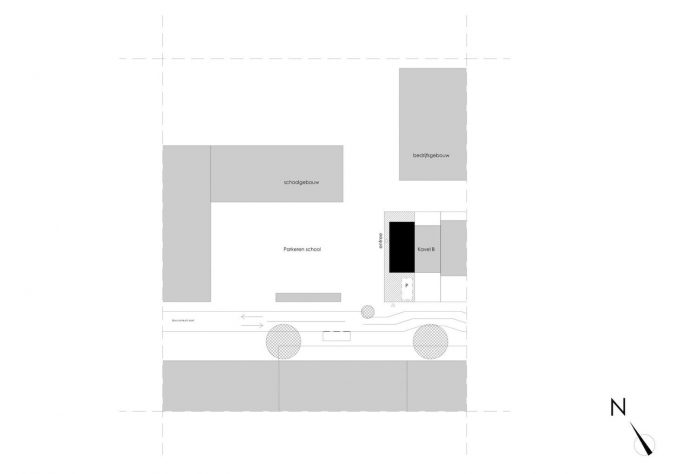
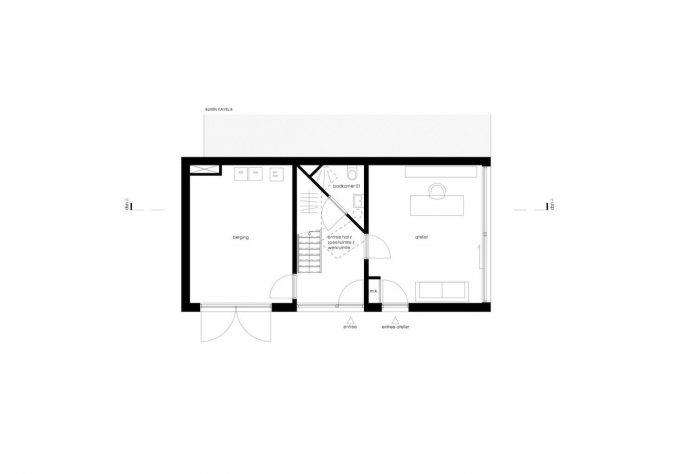
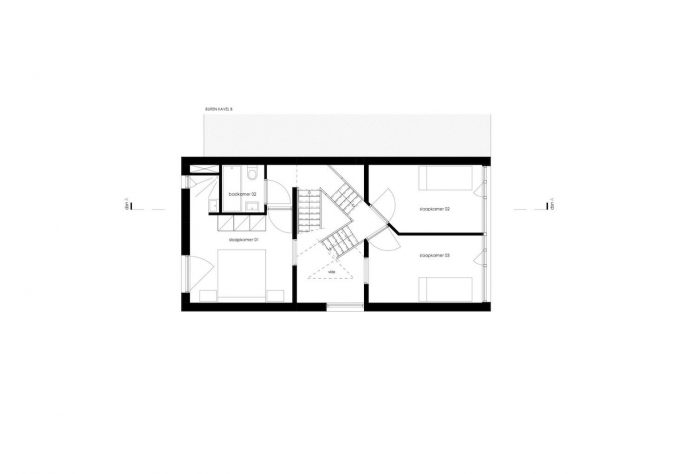
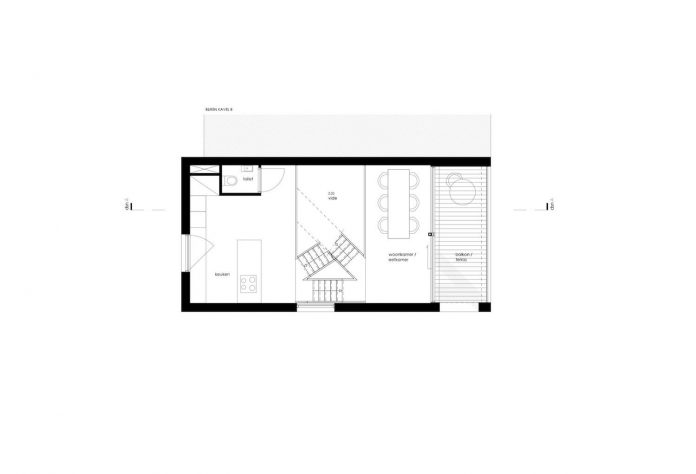
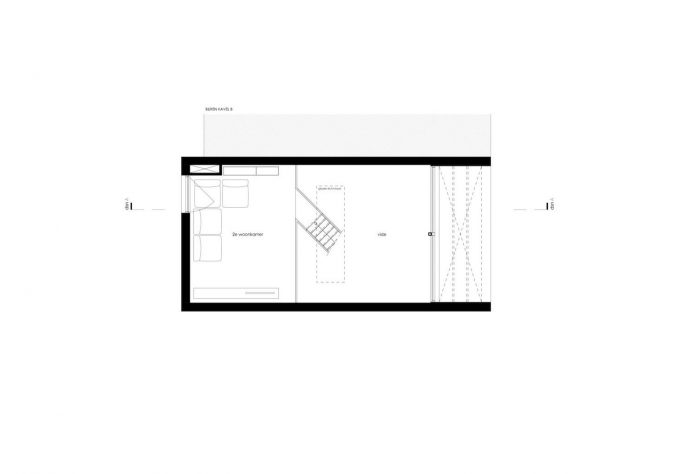
Thank you for reading this article!



